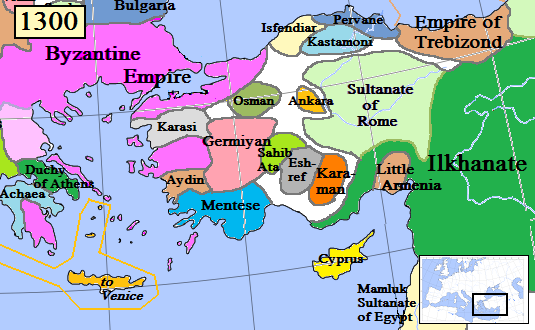|
Afshar Tribe
Afshar ( az, Əfşar افشار; tr, Avşar, ''Afşar''; tk, Owşar; fa, اَفشار, Āfshār) is a tribe of Oghuz Turkic origin, that split into several groups in Iran, Turkey and Afghanistan. During the Seljuk conquests of the 11th century, they moved from Central Asia into the Middle East. They are noted in history for being one of the Qizilbash tribes that helped establish the Safavid dynasty of Iran, and for being the source of descent of Iran's Afsharid dynasty. Nader Shah, who became the monarch of Iran in 1736, was from the Qereklu tribe ( fa, قرخلو) of Afshars. Afshars mainly inhabit Iran, where they remain a largely nomadic group. Today, the Afshars are variously grouped as a branch of the Azerbaijanis and Turkmens or Turkomans (a common general term used for people of Oghuz Turkic origin). The founders of the Germiyanids, Baku Khanate, Zanjan Khanate, Khalkhal Khanate, and Urmia Khanate were also of Afshar descent. The founder of the Karamanids may h ... [...More Info...] [...Related Items...] OR: [Wikipedia] [Google] [Baidu] |
Tamgha
A tamga or tamgha (from otk, 𐱃𐰢𐰍𐰀, tamga, lit=stamp, seal; tr, damga; mn, tamga; ; ); an abstract seal or stamp used by Eurasian nomads and by cultures influenced by them. The tamga was normally the emblem of a particular tribe, clan or family. They were common among the Eurasian nomads throughout Classical Antiquity and the Middle Ages. Similar tamga-like symbols were sometimes adopted by sedentary peoples adjacent to the Pontic–Caspian steppe both in Eastern Europe and Central Asia. Tamgas in the steppe tradition Ancient origins Tamgas originate in pre-historic times, but their exact usage and development cannot be continuously traced over time. There are, however, symbols represented in rock art that are referred to as tamgas and that are most likely functionally equivalent with medieval tamgas. In the later phases of the Bosporan Kingdom, the ruling dynasty applied personal tamgas, composed of a fragment representing the family and a fragment repres ... [...More Info...] [...Related Items...] OR: [Wikipedia] [Google] [Baidu] |
Safavid Dynasty
The Safavid dynasty (; fa, دودمان صفوی, Dudmâne Safavi, ) was one of Iran's most significant ruling dynasties reigning from Safavid Iran, 1501 to 1736. Their rule is often considered the beginning of History of Iran, modern Iranian history, as well as one of the gunpowder empires. The Safavid List of monarchs of Persia, Shāh Ismail I, Ismā'īl I established the Twelver denomination of Shia Islam, Shīʿa Islam as the Safavid conversion of Iran to Shia Islam, official religion of the Persian Empire, marking one of the most important turning points in the history of Islam. The Safavid dynasty had its origin in the Safavid order of Sufism, which was established in the city of Ardabil in the Azerbaijan (Iran), Iranian Azerbaijan region. It was an Iranian dynasty of Kurdish people, Kurdish origin, but during their rule they intermarried with Turkmens, Turkoman, Georgians, Georgian, Circassians, Circassian, and Pontic Greeks, Pontic GreekAnthony Bryer. "Greeks and Türkme ... [...More Info...] [...Related Items...] OR: [Wikipedia] [Google] [Baidu] |
Oghuz Khan
Oghuz Khagan or Oghuz Khan ( tk, Oguz Han or Oguz Kagan ; tr, Oğuz Kağan or Oğuz Han; Azerbaijani: Oğuz Xan or Oğuz Xaqan) is a legendary khan of the Turkic people and an eponymous ancestor of Oghuz Turks. Some Turkic cultures use the legend of Oghuz Khan to describe their ethnic and tribal origins. The various versions of the narrative preserved in many different manuscripts has been published in numerous languages as listed below in the references. The narratives about him are often entitled Oghuzname, of which there are several traditions, describing his many feats and conquests, some of these tend to overlap with other Turkic epic traditions such as Seljukname and The Book of Dede Korkut. The name of Oghuz Khan has been associated with Maodun, also known as Mete Han; the reason being that there is a remarkable similarity between the biography of Oghuz Khagan in the Turkic mythology and the biography of Maodun found in the Chinese historiography, which was first notic ... [...More Info...] [...Related Items...] OR: [Wikipedia] [Google] [Baidu] |
Rashid-al-Din Hamadani
Rashīd al-Dīn Ṭabīb ( fa, رشیدالدین طبیب; 1247–1318; also known as Rashīd al-Dīn Faḍlullāh Hamadānī, fa, links=no, رشیدالدین فضلالله همدانی) was a statesman, historian and physician in Ilkhanate Iran."Rashid ad-Din" ''Encyclopædia Britannica''. 2007. Encyclopædia Britannica Online. Accessed 11 April 2007. He was born in 1247 into a Persian Jewish family from Hamadan. Having converted to Islam by the age of 30, Rashid al-Din became the powerful |
Karamanids
The Karamanids ( tr, Karamanoğulları or ), also known as the Emirate of Karaman and Beylik of Karaman ( tr, Karamanoğulları Beyliği), was one of the Anatolian beyliks, centered in South-Central Anatolia around the present-day Karaman Province. From the middle 1300s until its fall in 1487, the Karamanid dynasty was one of the most powerful beyliks in Anatolia. History The Karamanids traced their ancestry from Hodja Sad al-Din and his son Nure Sufi Bey, who emigrated from Arran (roughly encompassing modern-day Azerbaijan) to Sivas because of the Mongol invasion in 1230. The Karamanids were members of the Salur tribe of Oghuz Turks. According to Muhsin Yazıcıoğlu and others, they were members of the Afshar tribe,Cahen, Claude, ''Pre-Ottoman Turkey: A General Survey of the Material and Spiritual Culture and History c. 1071–1330'', trans. J. Jones-Williams (New York: Taplinger, 1968), pp. 281–2. which participated in the revolt led by Baba Ishak and afterwards ... [...More Info...] [...Related Items...] OR: [Wikipedia] [Google] [Baidu] |
Urmia Khanate The Afshars of Urmia (also spelled Urmiya; fa, افشارهای ارومیه) are a branch of the Afshar tribe centered in the Iranian city of Urmia. From 1624/25 to 1820/21, the governorship of Urmia was mainly in the hands of the Urmia Afshars. After that, only a few them served as its governor, the last one being Imam Quli Khan, who became governor in 1879/80. |


